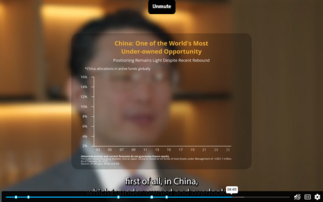How did emerging-market debt perform in the second quarter?
As is well known, COVID-19 continues to present economic, health and humanitarian issues across the globe and particularly in emerging markets, where many of the world's most vulnerable people to this crisis reside. After the profound fall in markets early in the year, however, the second quarter saw a strong, broadbased rebound for almost all risk assets, and EMD was no exception. The rebound gained strength mid-quarter, as the global economy began slowly reopening and the worst of the oil market woes and peak uncertainty related to pandemic started to dissipate.
Looking at our proprietary attribution of the underlying risk factors in each EMD segment, we can see what drove performance at the index level (Exhibit A). For local-currency EMD, falling rates in emerging markets (EM) acted as the strongest contributor to returns on the J.P. Morgan Government Bond Index Emerging Market (GBI-EM) Global Diversified. US Treasury yields, a key driver of EM rates, fell significantly early in the year, leading to a notable fall in EM interest rates in the second quarter. Currency also acted as a meaningful contributor to performance.
EM credit, which includes hard-currency sovereign and corporate EMD, was among the hardest hit markets in Q1, but enjoyed a strong rebound in Q2. Spreads rallied as the unprecedented easing in global monetary policy buoyed sentiment and the successful run of new issuance allayed fears regarding market access. Interestingly, US Treasury yields had little-to-no impact on either the J.P. Morgan Emerging Market Bond Index (EMBI) Global Diversified or J.P. Morgan Corporate Emerging Market Bond Index (CEMBI) Broad Diversified. Historically, we estimate that circa 50% of hard-currency EMD returns have been driven by US Treasury yields. After descending in Q1, US Treasury yields remained fairly rangebound last quarter, having a muted effect.
While the second-quarter rebound was significant, we continue to see some depressed valuations and believe that EMD still carries value broadly. As global investors sought out yield, return enhancement and diversification, the technical backdrop now appears more supportive with net flows turning positive in Q2. However, the picture is mixed at the country level and selectiveness remains key.
Have we seen significant issuer distress in 2020?
As could be expected, we have seen distressed debt in several areas of the EM universe. We broadly categorize distress into three groups: First, countries that faced severe challenges…
Risks
Source: Eaton Vance
An imbalance in supply and demand in the income market may result in valuation uncertainties and greater volatility, less liquidity, widening credit spreads and a lack of price transparency in the market. Investments in income securities may be affected by changes in the creditworthiness of the issuer and are subject to the risk of non-payment of principal and interest. The value of income securities also may decline because of real or perceived concerns about the issuer's ability to make principal and interest payments. As interest rates rise, the value of certain income investments is likely to decline. Investments involving higher risk do not necessarily mean higher return potential. Diversification cannot ensure a profit or eliminate the risk of loss. Debt securities are subject to risks that the issuer will not meet its payment obligations. Low rated or equivalent unrated debt securities of the type in which a strategy will invest generally offer a higher return than higher rated debt securities, but also are subject to greater risks that the issuer will default. Unrated bonds are generally regarded as being speculative. In emerging-market countries, the risks may be more significant in regards to sensitivity to stock market volatility, adverse market, economic, political, regulatory, geopolitical and other conditions.
Sources of all data: Eaton Vance and JPMorgan.
In the United Kingdom, this material is issued by Eaton Vance Management (International) Limited ("EVMI"), 125 Old Broad Street, London, EC2N 1AR, UK, and is authorised and regulated by the Financial Conduct Authority. EVMI markets the services of the following strategic affiliates: Parametric Portfolio Associates® LLC ("PPA"), an investment advisor registered with the SEC. Hexavest Inc. ("Hexavest") is an investment advisor based in Montreal, Canada and registered with the SEC in the United States, and has a strategic partnership with Eaton Vance, and Calvert Research and Management ("CRM") is an investment advisor registered with the SEC.
This material is issued by EVMI and is for Professional Clients/Accredited Investors only.











